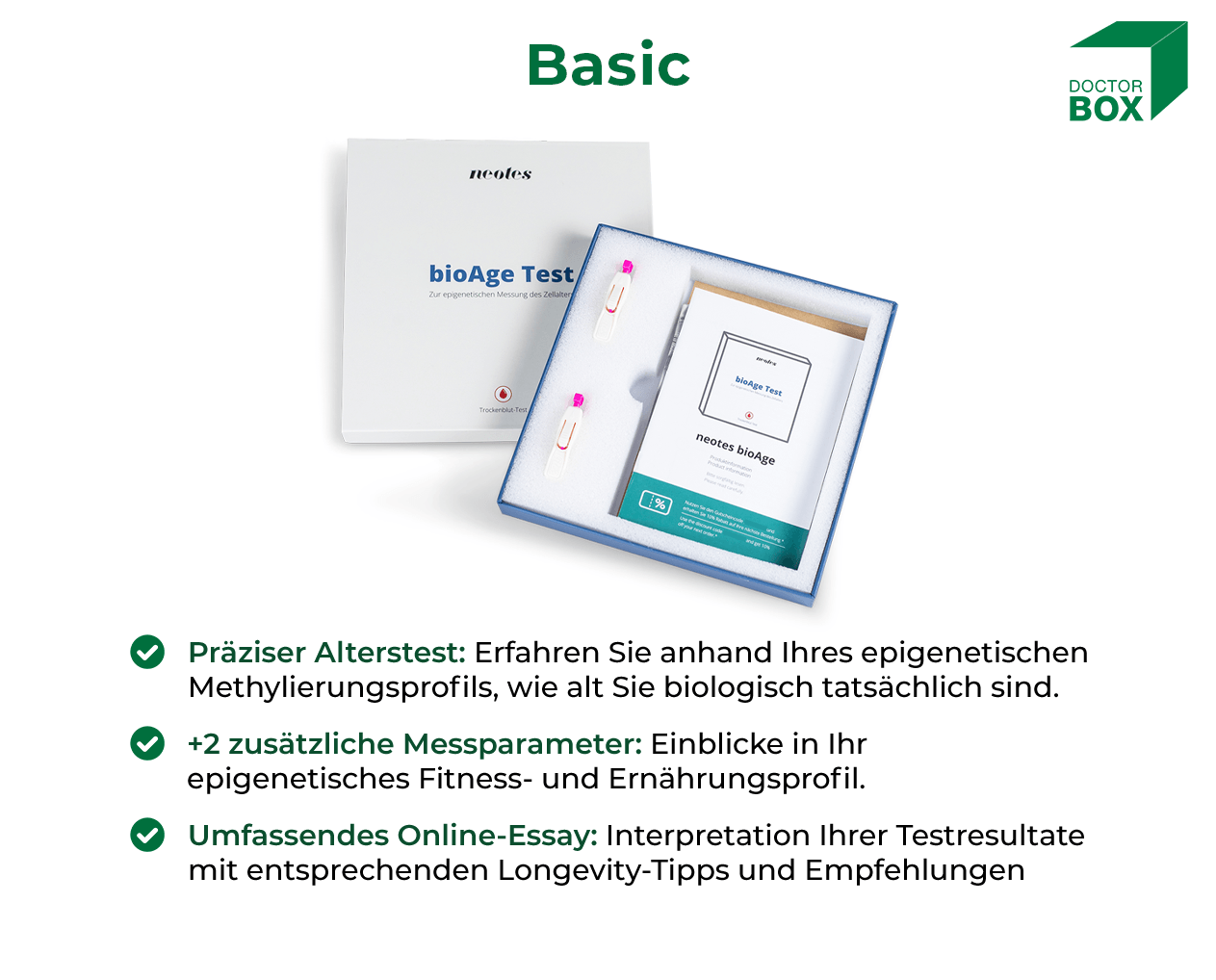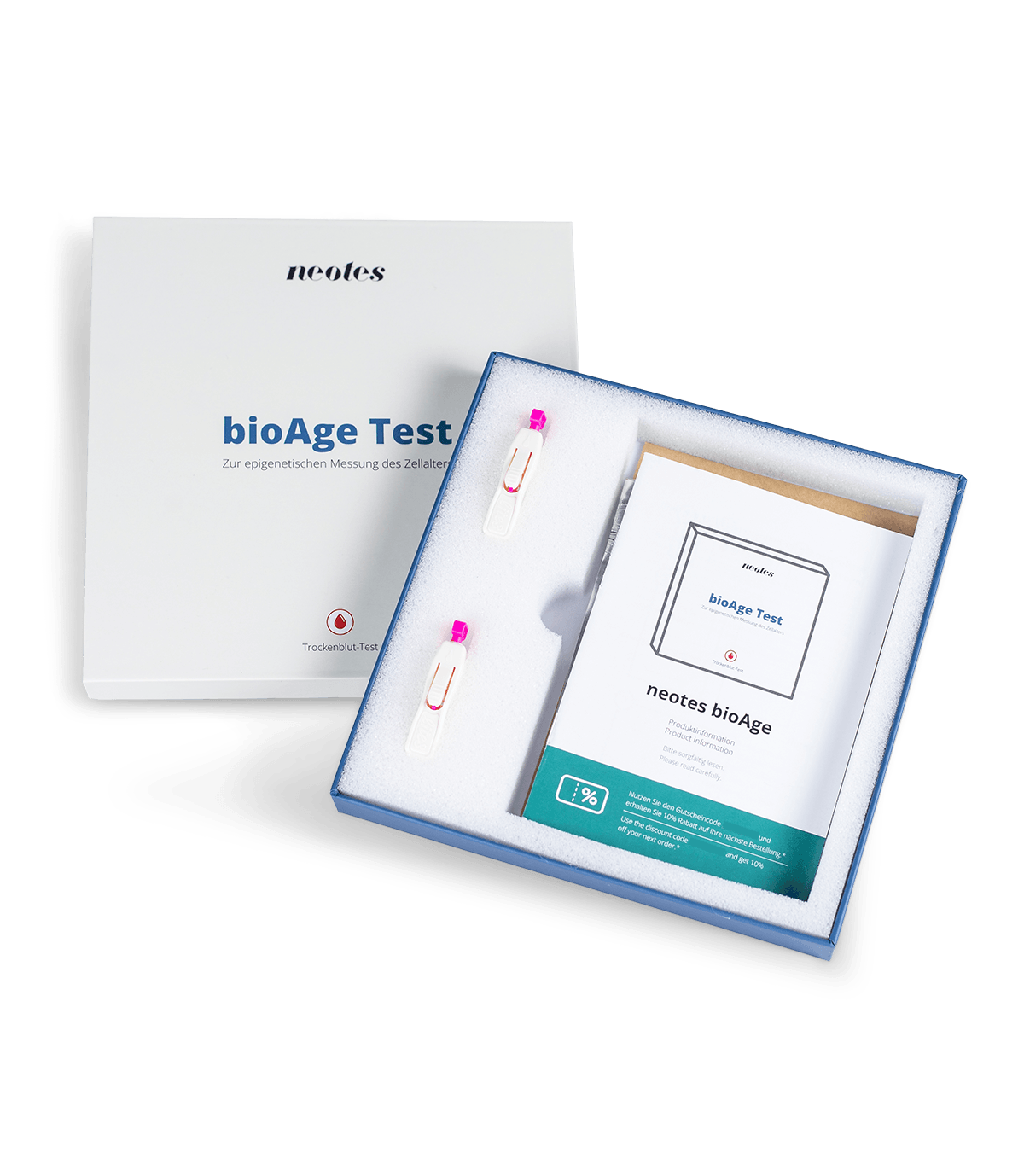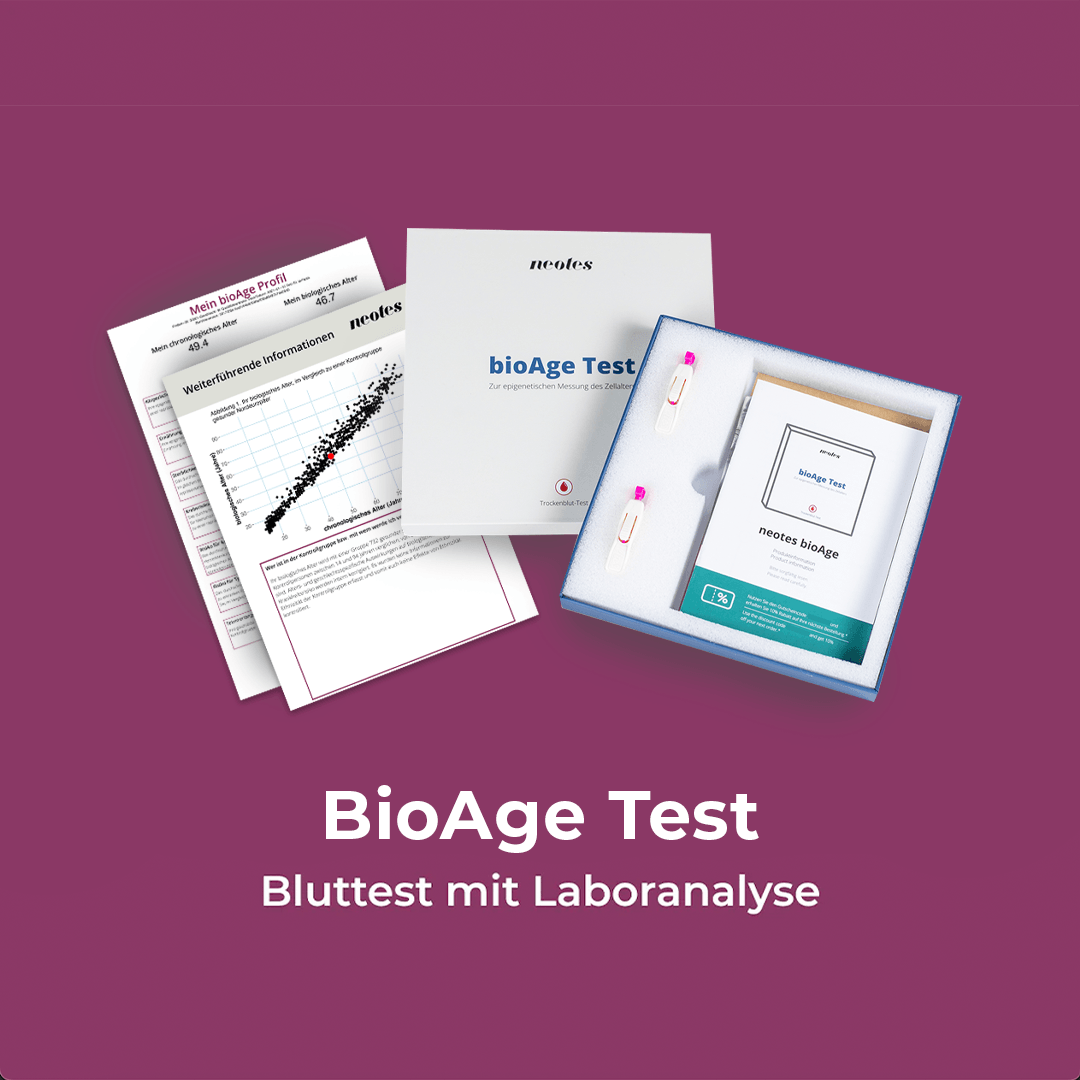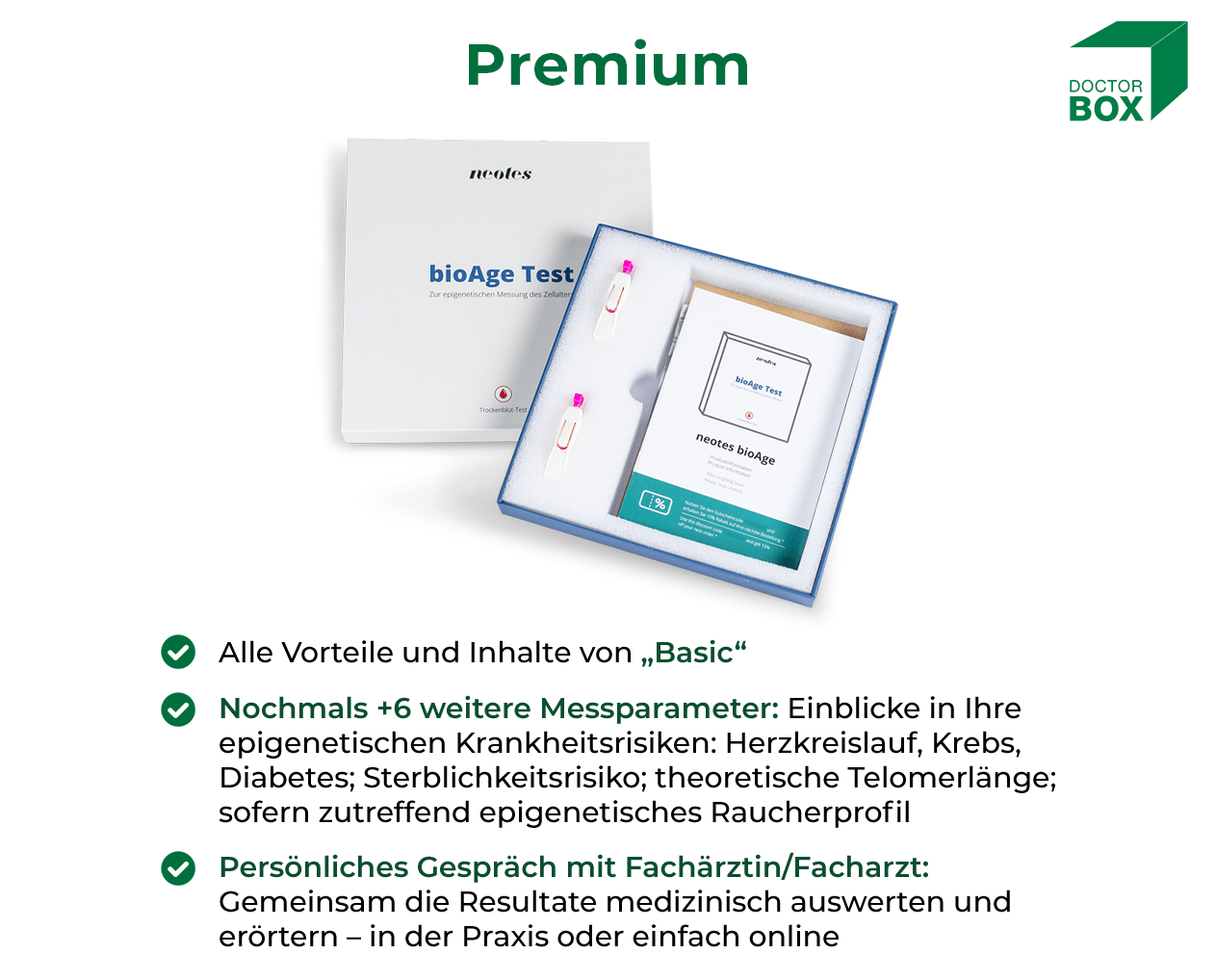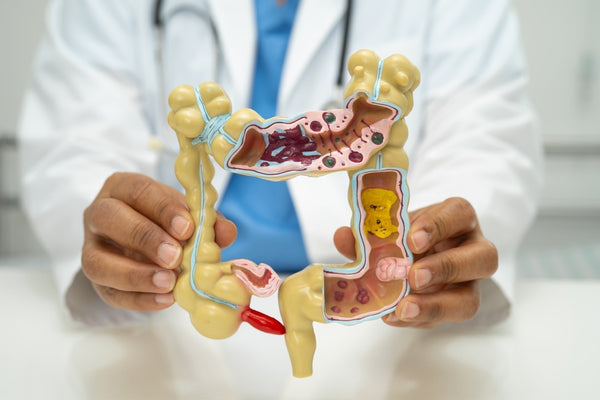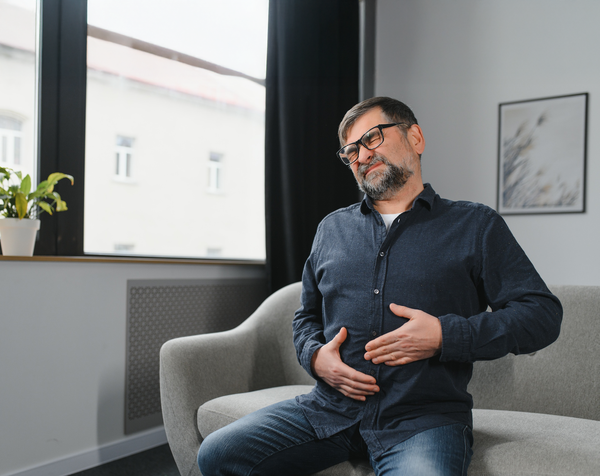neotes bioAge test
Couldn't load pickup availability
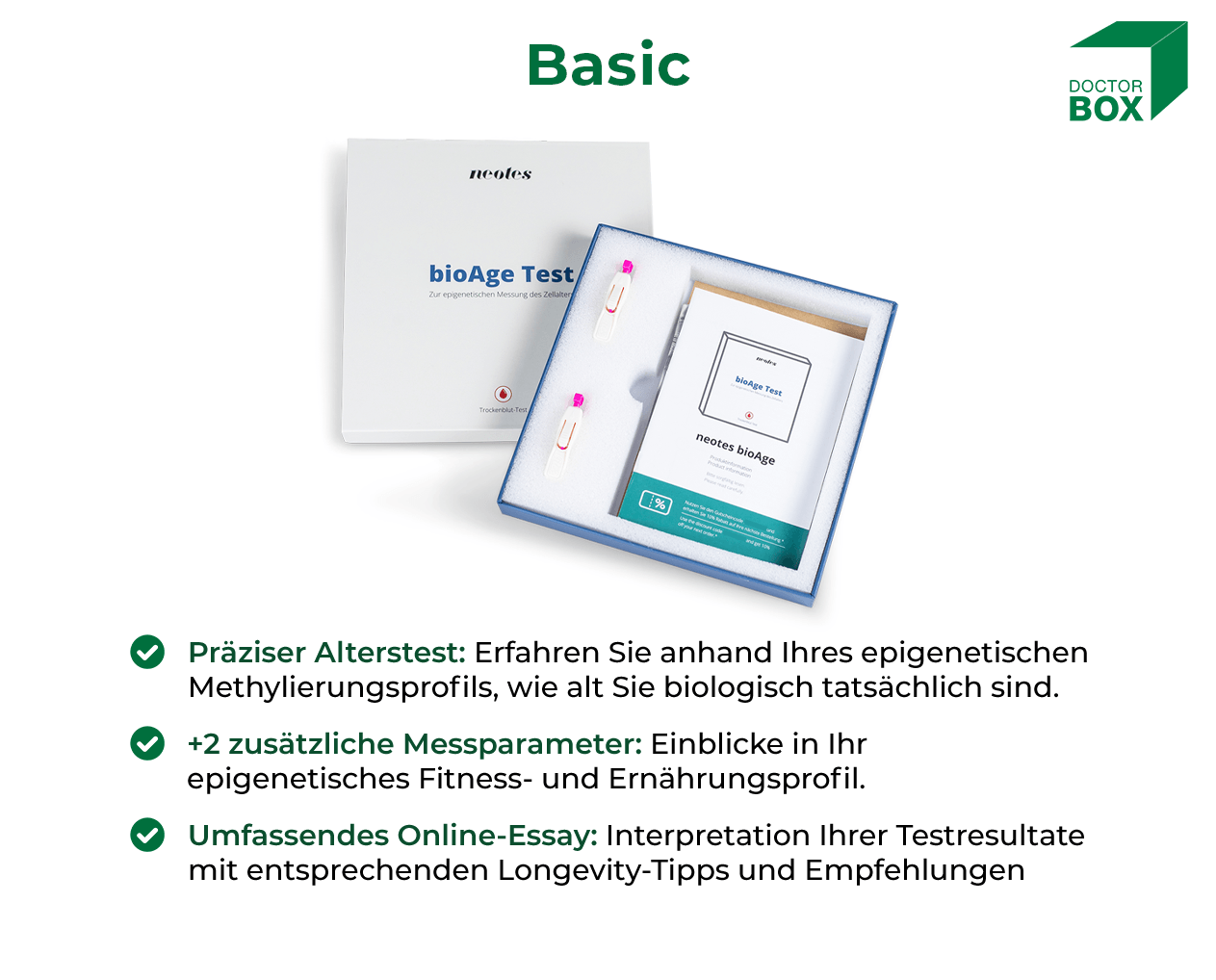
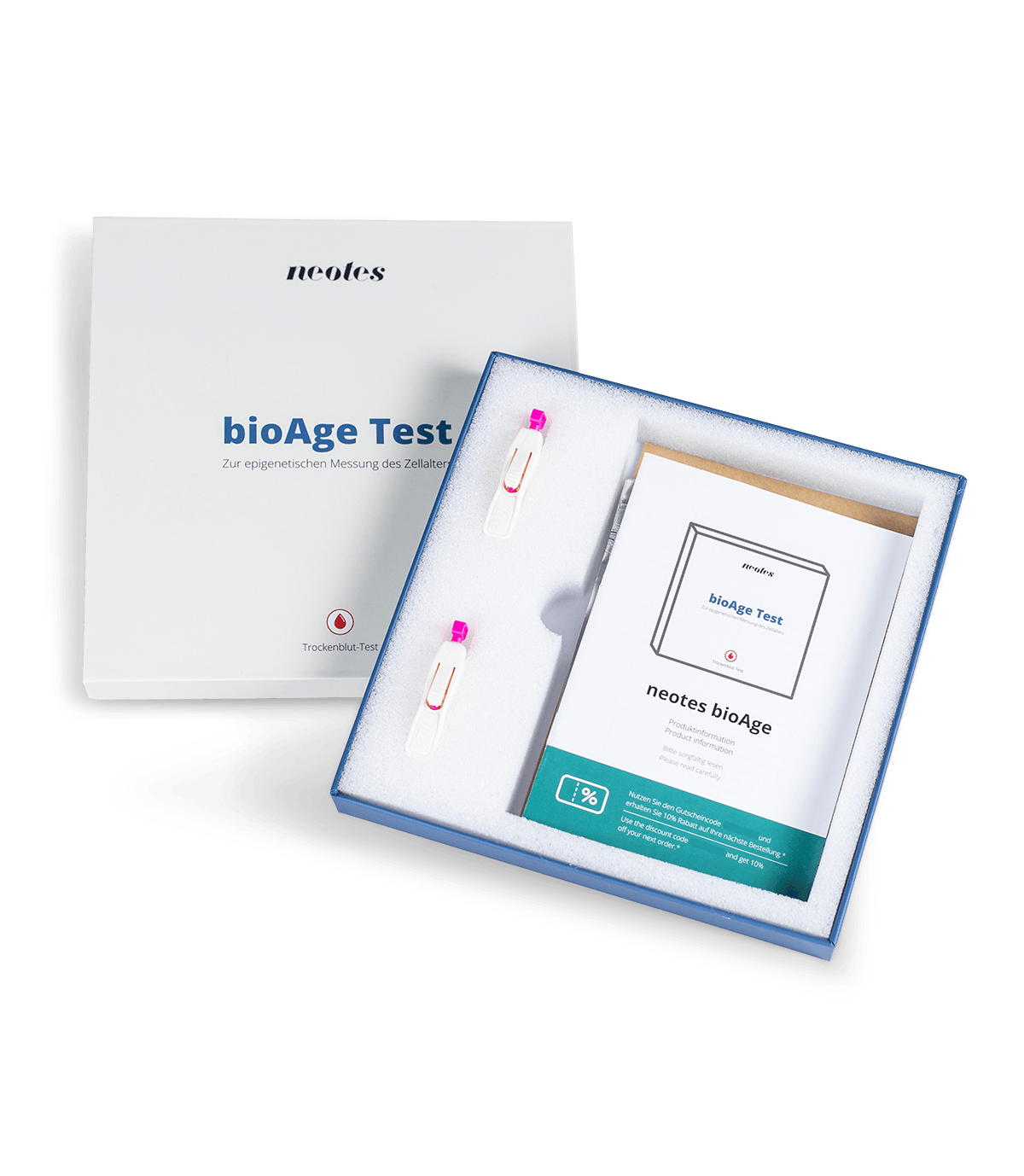

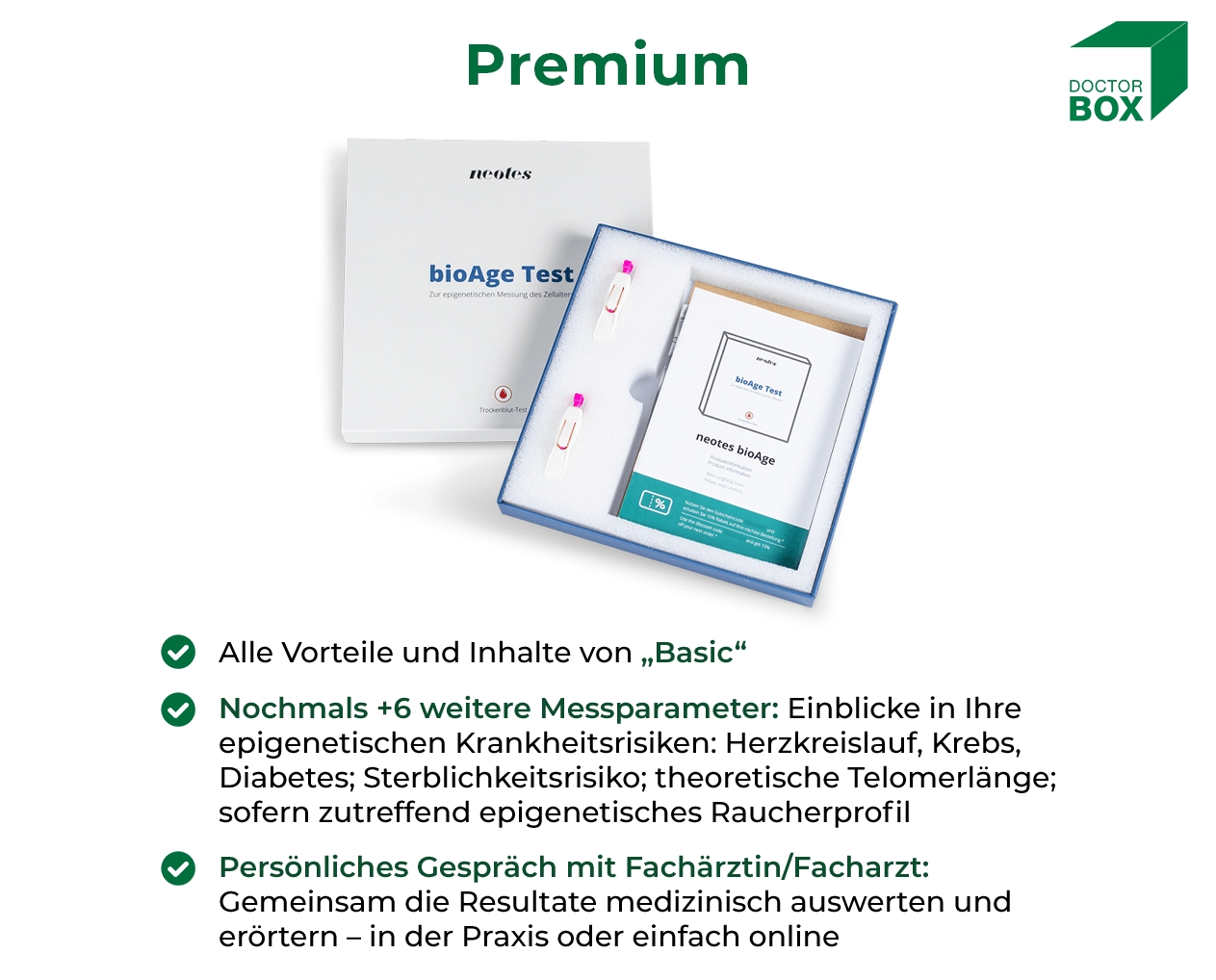
neotes bioAge test
Is your biological clock working correctly? Make sure the steps you are taking now are actually leading to a healthier, longer life – use the bioAge test to measure this.
- Decode your epigenetic changes – to understand how your environment and lifestyle have affected your aging process.
- Based on more than 10 years of research and developed in collaboration with the University of Oslo, the bioAge test offers a scientifically based measurement method for individual health prevention.
- Take control – Influence the future of your health by reviewing your current status and making adjustments if necessary to reduce the effects of aging on your body!
- Get detailed information about your biological age and additional metrics based on your epigenetic profile.
What is biological age?
Biological age indicates how quickly the body ages at the cellular level. In contrast, chronological age refers only to the years that have passed since birth. Biological age can differ greatly from chronological age depending on lifestyle and environmental factors and provides more information about the body's state of health.
But how do we actually age?
One of the many reasons for aging is the change in DNA through so-called methylation. These methylation sites in the DNA can be measured with the bioAge test. Telomere length, special “protective caps” at the end of our chromosomes, is also a measure of aging, which the bioAge test makes use of.
Environmental influences and other epigenetic factors such as diet, exercise or stress also influence these DNA changes. The individual biological or epigenetic age can be measured based on the methylation profile, the length of the telomeres and epigenetics.
Why is it important to test my biological age?
Prevention is the key word here. With the epigenetic age test, you can take personal responsibility for your health and align your diet and lifestyle with longevity. The bioAge test also helps monitor the effectiveness of your behavioral changes and make your rejuvenation demonstrable. The test should therefore be carried out again after approximately 6 months.
What happens in the laboratory?
After sending in your sample, our partner laboratory uses a precise biochemical method to determine the methylation of your DNA and the length of your telomeres. Your DNA is then loaded onto a special chip and scanned to create a methylation profile. Your personal methylation profile is then compared with that of a cohort of the same age and gender. The result obtained can be used to draw conclusions about cell aging and thus your biological age.
After approximately 4 weeks, you will receive a protected report containing your biological age, selected measurement parameters and personal recommendations from our longevity experts based on your epigenetic profile to improve your biological age.
What does the bioAge Report contain?
- Your epigenetic data, presented graphically and understandably
- the difference between your chronological and biological age
- the state of health through the nutrition and fitness profile
- the risks for chronic age-related diseases
- the interpretation of the data and recommendations from our experts
- created according to the latest findings in longevity research
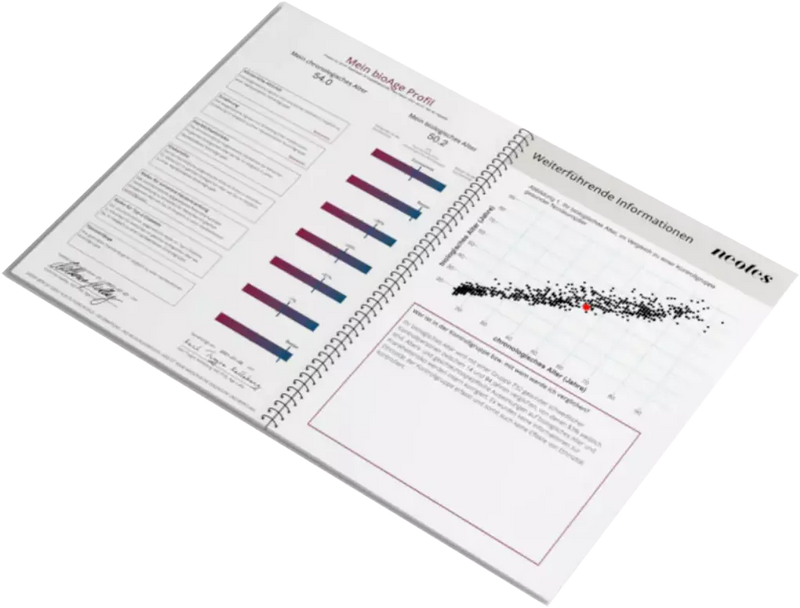
In principle, we use modern molecular biological methods and high-performance computers to analyse your samples. We use laboratory analyses to make the methylation of your DNA visible and measurable. A chip onto which your prepared DNA is applied then measures the methylation and creates data for your personal methylation profile. Using optimised statistical models, the high-performance computer then calculates your biological age based on the methylation profile. Depending on the workload in the laboratory, you will receive the result of your bioAge test within approx. 4 weeks of receipt of your sample.
The processes are structured as follows:
- Week 1: DNA extraction
- Week 2: Reading the methylation sites with Illumina Chip
- Week 3-4: Analysis of the methylation profile, calculation of biological age and other parameters using bioinformatics model
- Week 4+: Results announcement
The bioAge test only requires a small amount of blood from you, and not large amounts that would require a sample to be taken by a doctor. However, it is possible that you may not immediately get enough blood for the bioAge test when taking a sample from your finger. This is nothing to worry about and does happen from time to time, depending on a variety of factors such as cold, excitement or an unfavorable position on the finger.
If you are having trouble getting enough blood out of your finger, anything that stimulates blood flow throughout your body and hand will help. For example, hold your arm or hand in warm water, move your arm in circular motions, or massage your fingers from the palm to the fingertip. It turns out that clapping your hands firmly is a very good method. If in doubt, just try again on a different finger.
It is best to take the neotes bioAge test to your local post office immediately after taking the sample. In order to keep the sample as fresh as possible, gentle and quick processing is important.
On the one hand, this means that it is best to schedule the sample collection so that you can go to a post office straight afterward. If necessary, you can take the blood sample in the evening and take the test to the post office the next morning.
On the other hand, you should definitely drop off the package directly at the branch. This will ensure that it is sent as quickly as possible and stored carefully. Although the samples are relatively insensitive to external disturbances, extreme conditions such as frost or heat, such as those found in mailboxes, can theoretically distort the results.
So funktioniert's
Probe zu Hause entnehmen
Lies vor dem Start die beiliegende Anleitung aufmerksam durch. Die Blutentnahme ist unkompliziert und in wenigen Schritten erledigt.

Barcode einscannen
Scanne den mitgelieferten Barcode ganz einfach in der DoctorBox App – so wird deine Probe eindeutig dir zugeordnet.

Probe versenden
Verpacke die Blutprobe wie in der Anleitung beschrieben und bring den vorfrankierten Umschlag am besten noch am selben Tag zur Post.

Befund erhalten
Nach der Laboranalyse bekommst du dein Ergebnis direkt in die DoctorBox App – übersichtlich, leicht verständlich und jederzeit abrufbar.
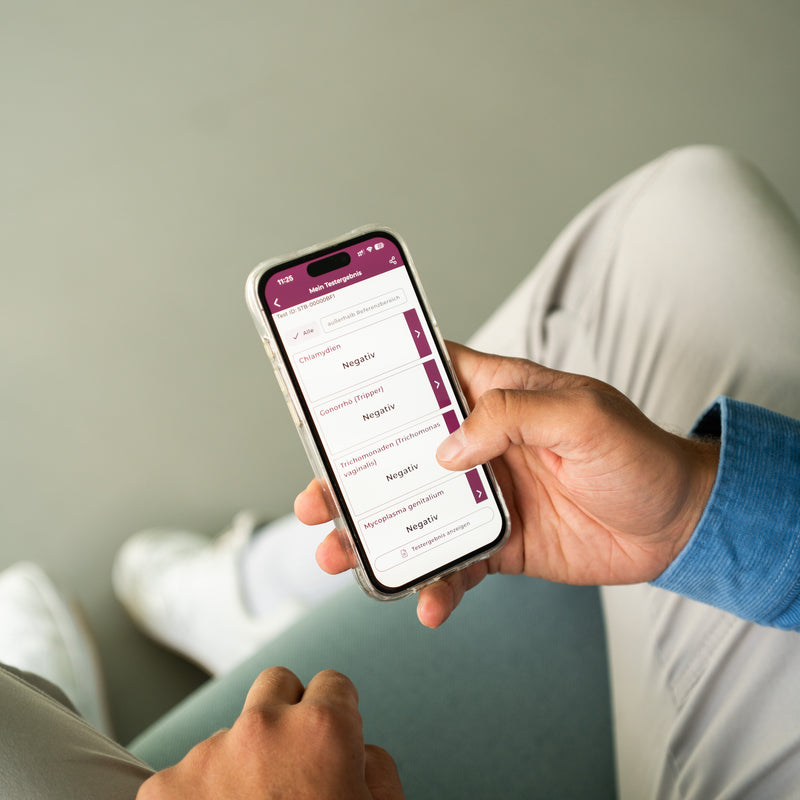
Kundenbewertungen
Entdecke unsere
Neuesten Beiträge
Entdecke die neuesten Beiträge und lass dich inspirieren.


